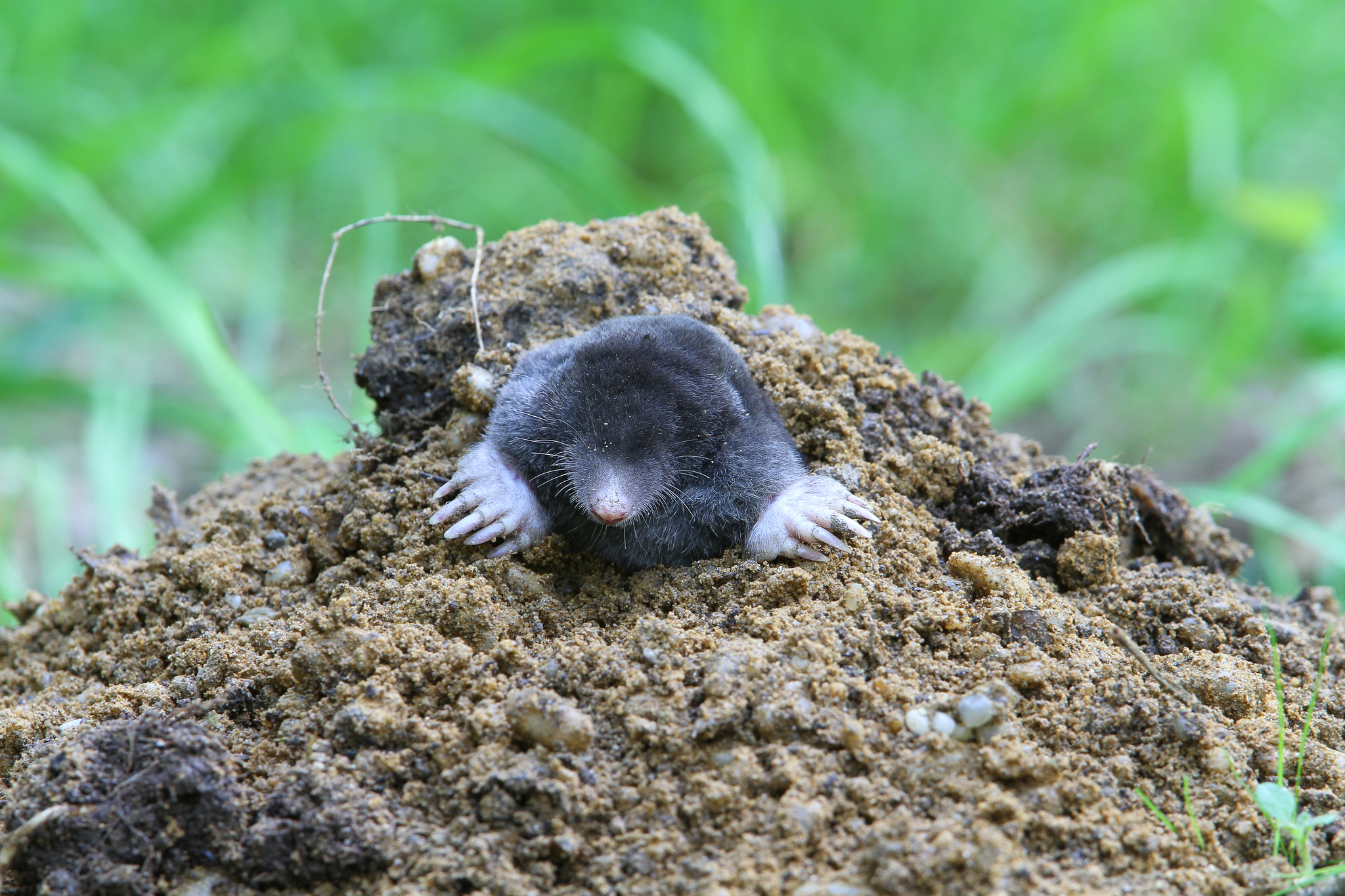When I was a little girl, I wore Coke-bottle-lens glasses. They were heavy, and often made my nose sore where they rested on the nose pieces. To make them more comfortable, my father put moleskin pads on the nose pieces to cushion them. This helped until the little pads inevitably fell off and had to be replaced.
The term moleskin conjured for me a very soft little creature, looking something like a potato that lived underground. I wondered how people caught them to get the pads for my glasses. Later I learned that moleskin was actually made of cotton and named thus because it was soft and nondirectional like the fur of a mole.
We had several inches of rain within a couple of weeks last October. One of the results was to force the moles toward the surface of the ground where their runs and mounds became visible. We haven’t seen a mole, but have seen these runs pop up in the grass and a mole hill or two besides.
The term mole derives from a middle English moldewarp, which means earth thrower. And the little fellows have earned their name. On average, they are about five and a half inches long with an inch-long, hairless tail. They have soft brown fur and a long, pointy snout. moles have powerful front legs with extra-wide paws that they use for tunneling, or swimming, through the soil. A mole can dig up to 18 feet of tunnel in a single hour searching for prey. This is hard work, so they need to eat up to 100% of their body weight every day. They like to snack on earthworms, grubs, and other insects in the soil and seldom eat plants. Their digging can disturb plant roots, though, killing the plants in a yard or garden, to the annoyance of the gardener. The Eastern moles that live at Owl Acres have a long, tapered snout with short whiskers and hardened skin at the tip. They are thought to be blind except for light perception, and their eyes and ears are covered with membranes, leaving no visible external organs but keeping the dirt out. They are champion smellers, though, with the ability to use stereo sniffing, kind of like stereo hearing or binocular vision. By differentiating the scent in one nostril from the scent in the other, they can very accurately pinpoint their next meal. Their short whiskers and the skin on their noses are extremely sensitive as well, and they are tuned in to vibrations in the soil that would alert them to activity overhead.
The ridges in the grass give away the surface tunnels that the moles create and use to hunt for prey. The mole hills that erupt in the grass like little volcanos are deposits of excess dirt shifted during digging. Deeper tunnels provide nesting and winter quarters. Moles live alone most of the time except during the spring when they are breeding.
Moles don’t hibernate. They move deeper underground as the ground freezes, following the frost line where they continue to be active. Because of a special type of hemoglobin in their blood cells, moles utilize oxygen more efficiently than we do. This allows them to tolerate high levels of carbon dioxide and to live in their deep burrows. There are worms down there, and the moles get the food and water they need by eating them.
Not unlike much larger mammals such as deer and elk, male moles are territorial and will fight to the death to obtain the breeding prize. The winning male will visit his lady in her burrow sometime in March through May. They will mate, and he will promptly abandon ship. She will raise her young on her own.
Their volcano-shaped excavations have, of course, also given rise to the popular comparisons between molehills and mountains. This little ditty is often proclaimed at our house:
“I built a mountain, tall and strong,
And proud was I to love it
Until a cynic came along
And made a molehill of it.”
Photo by Christoph Moning

2 comments
I tend to think of moles as larger creatures. They certainly can make a big mess!!